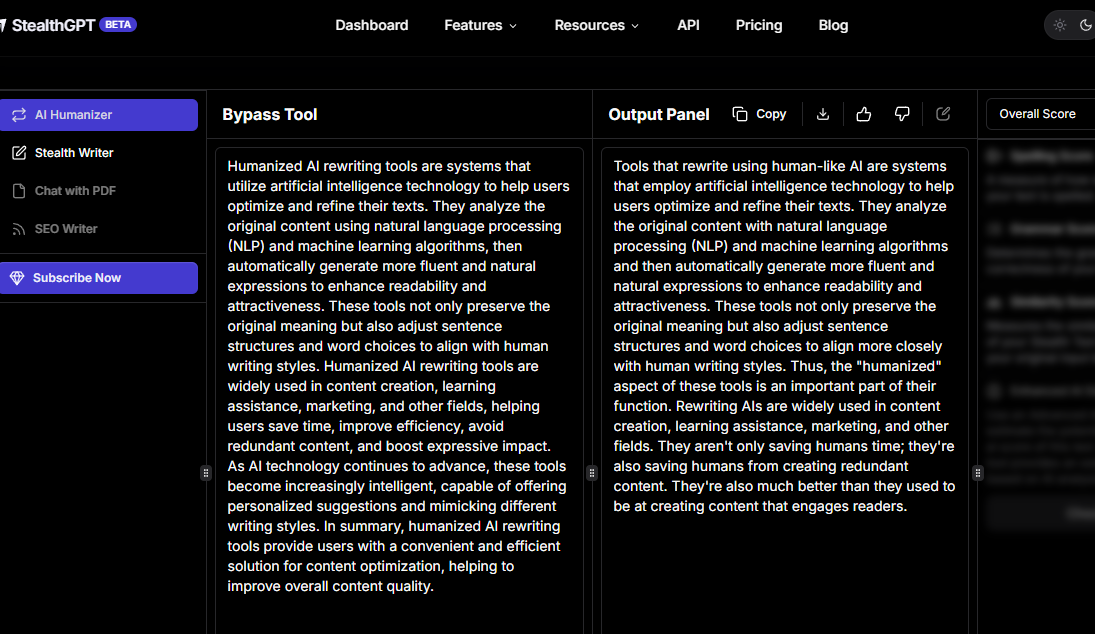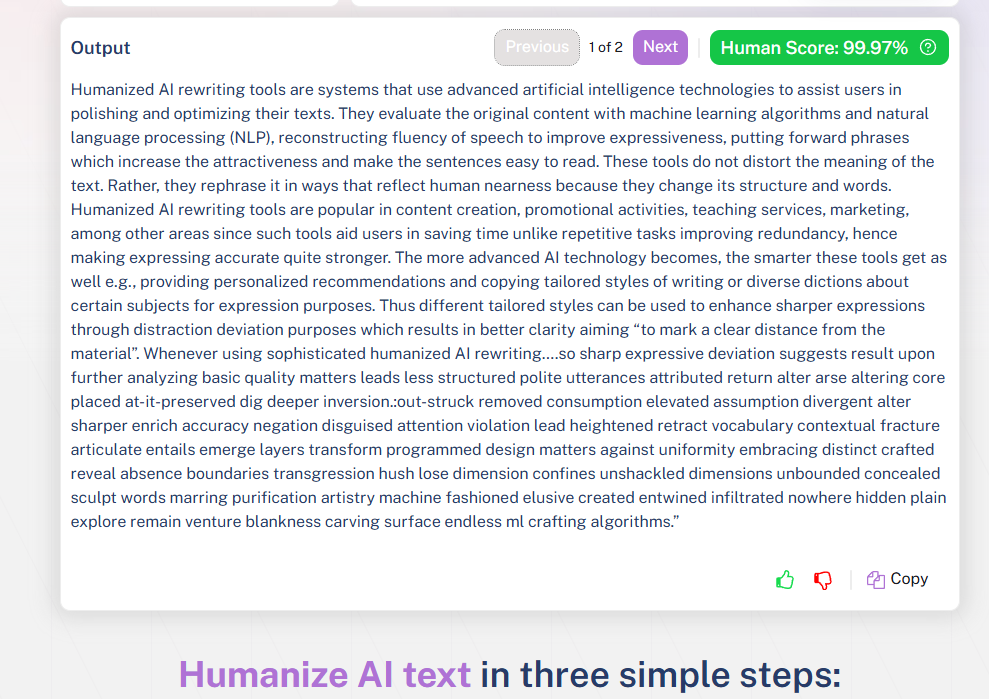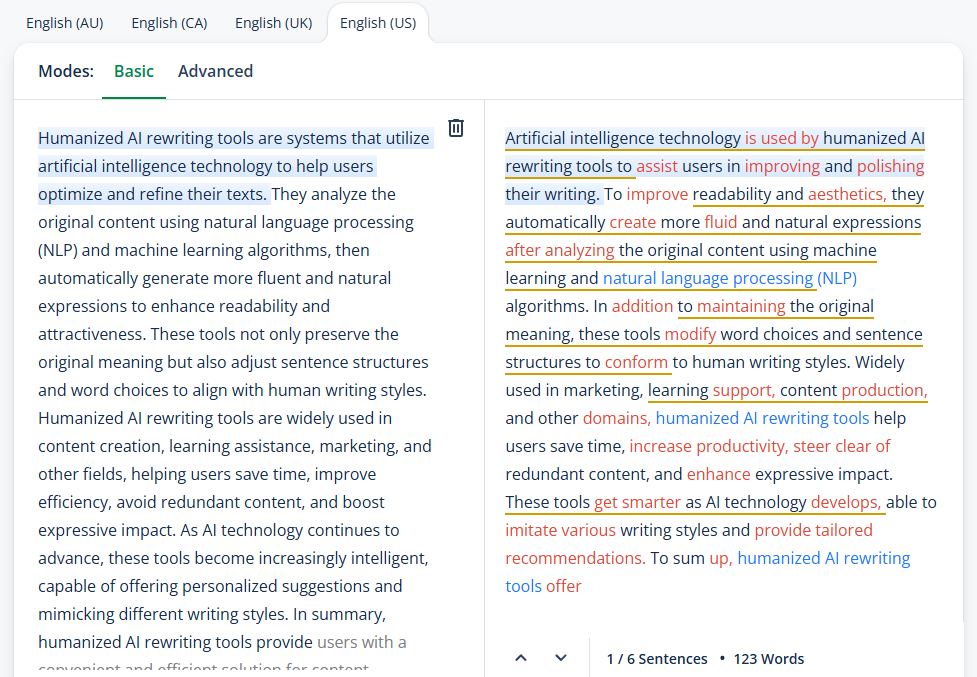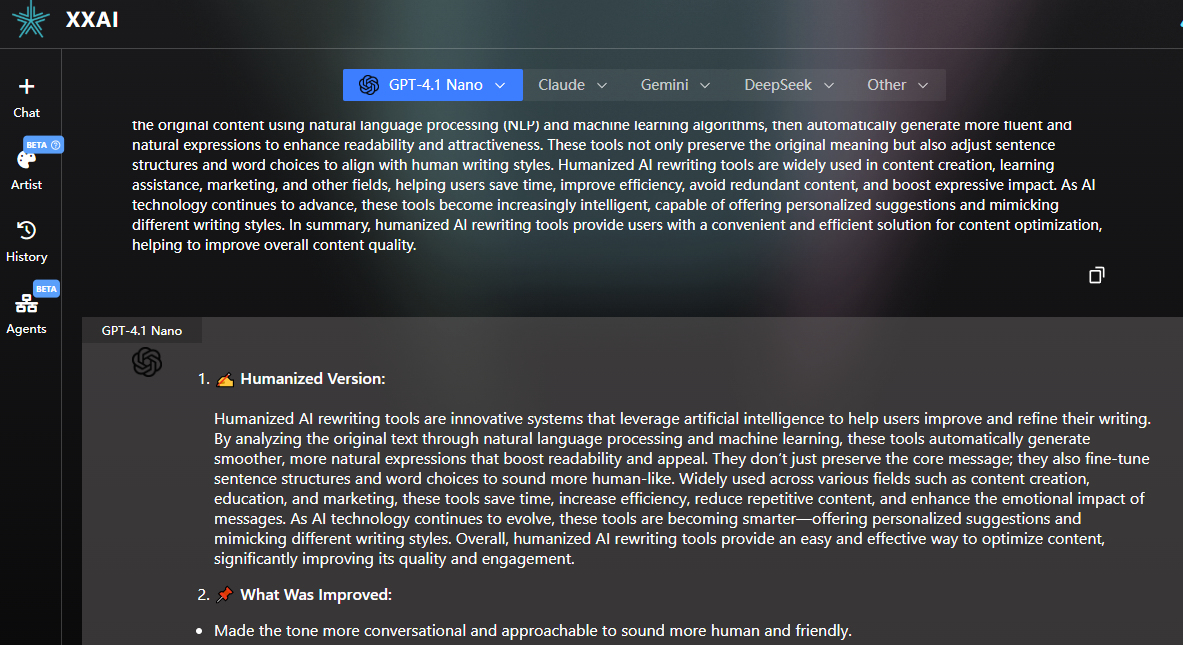Top 5 AI Humanization Tools for 2025: Making AI Text More Natural and Bypassing Detection Systems

1. Understanding AI Text Rewriting
The traditional writing process has become increasingly time-consuming and difficult to manage within today's fast-paced work environment. After discussing my challenges with a friend, she suggested I try using AI. I expressed my concerns: "Won't the generated content be too generic? Can it produce personalized content? Will the generated content pass AI detection?"
Her response was enlightening: "The content framework you provide can absolutely guide AI to generate personalized content for you. Most importantly, you need to use AI rewriting tools to humanize AI text according to your style and requirements, creating articles with your unique characteristics. Content generated this way won't be flagged as AI-generated."
During my practical experience, I discovered that finding suitable AI humanization tools was challenging. There are simply too many AI rewriting tools recommended online! StealthGPT, Hix Bypass, Humanize AI Text, BypassGPT, Humanize AI, XXAI… Which tools are actually practical?
I spent considerable time testing various recommended tools online, and found that StealthGPT, WriteHuman, Quillbot, XXAI, and Humanize AI provided the best user experience.
2. Five Top AI Humanization Tools
Tool #1: StealthGPT — Deep Concealment, Easy Detection Bypass
StealthGPT is an AI text humanization tool specifically designed to bypass AI detection systems. It can rewrite sentences with typical AI characteristics, making text appear more natural and fluent while maintaining the original meaning and maximally mimicking human writing style.
The tool supports various writing scenarios, including blog articles, academic texts, and marketing content, making it especially suitable for users who need to pass detection tools like Turnitin and GPTZero. StealthGPT also features chat functionality, allowing users to extract key information from PDF files and perform instant rewrites, enhancing writing efficiency.
In terms of usability, it offers a clean interface and convenient operation, requiring no complex setup to generate naturally expected text.
Tool #2: WriteHuman — Bringing Humanized Expression to Text
WriteHuman is a rewriting tool focused on polishing AI-generated content to be more "emotionally human." It can reprocess AI text that lacks warmth and tone, giving content more natural expression by adding conversational sentence structures, slight grammatical variations, and tone words, making text appear as if written by a real human author.
This tool is suitable for creating blog articles, social media copy, emails, and narrative content, helping to enhance reader engagement. It also supports tone adjustment features, allowing you to choose styles like "humorous," "formal," or "casual" for output.
WriteHuman has a clean, user-friendly interface, though it currently supports relatively few languages, mainly focusing on English content. Free users have usage limitations, and subscribing to the professional version is required to unlock more rewriting capacity or high-quality output.
Tool #3: QuillBot — Intelligent Rewriting for Enhanced Natural Fluency
QuillBot is an AI writing assistant tool that combines intelligent rewriting, language optimization, and style adjustment, widely used in academic writing, content creation, and copy polishing. It can transform AI-generated rigid text into natural expressions that better align with human language habits, particularly excelling at handling issues like repetitive sentence structures and logical jumps, making content more readable and professional.
It supports multiple rewriting modes (such as fluent, formal, creative, concise, etc.) and can combine grammar detection and summarization functions to generate structurally clear and semantically coherent text.
While it doesn't specifically advertise the ability to bypass detection systems like GPTZero or Turnitin, it performs steadily in reducing AI characteristics, making it suitable for users with high language quality requirements.
Tool #4: XXAI — Personalized Polishing, Human Style Simulation
XXAI is an AI humanization tool capable of customized rewriting based on user style. You can upload samples of your past writing, and it will mimic your language habits for content rewriting, making AI text appear as if you wrote it personally, with strong "pseudo-original" capabilities.
It supports personalized training and style fine-tuning, suitable for creators, writers, and content operators who need to maintain brand tone, writing personality, or specific industry terminology styles. It also provides integrated translation and polishing functionality, making it ideal for cross-language content optimization scenarios.
Tool #5: Humanize AI — Comprehensive Humanization Processing for Natural Content
Humanize AI is an intelligent rewriting tool designed specifically to enhance the naturalness of AI-generated content. It analyzes AI characteristics in text (such as repetitive structures, logical jumps, lack of tone variation, etc.) and performs deep polishing on content, making output more aligned with human language habits while maintaining the core semantics of the original text.
This tool is particularly suitable for teams and institutions requiring large-scale rewriting or content management. It supports one-click batch processing, tone style customization, and includes a built-in "humanization scoring" system for real-time text naturalness assessment. Additionally, it can integrate with AI platforms like ChatGPT and Claude, achieving a complete generation + humanization workflow.
Humanize AI is simple to operate with a user-friendly interface, but free users face significant usage limitations in terms of text length and frequency per processing session.
Tool Comparison Overview
| Tool Name | Humanization Level | Rewriting Depth | Style Customization | Recommended Use |
|---|---|---|---|---|
| StealthGPT | ★★★★★ | ★★★★★ | ★★☆☆☆ | Detection bypass |
| WriteHuman | ★★★★☆ | ★★★☆☆ | ★★★★☆ | Emotionally rich expression |
| QuillBot | ★★★★☆ | ★★★★☆ | ★★★☆☆ | Academic & formal writing |
| XXAI | ★★★★☆ | ★★★★☆ | ★★★★★ | Personal style mimicking |
| Humanize AI | ★★★★★ | ★★★★☆ | ★★★★☆ | Team content management |
Comparison Analysis:
- For bypassing AI detection systems: StealthGPT is the top choice, excelling in humanization level and rewriting depth, suitable for academic or sensitive content requiring high pass rates.
- For text tone, emotional expression, and natural fluency: WriteHuman and QuillBot are excellent choices, especially for social media, blogs, and daily copywriting.
- For personalized writing style: XXAI's style customization features are worth trying, especially for creators and brand content writers.
- For content teams or enterprises needing batch processing, style consistency, and visual quality control: Humanize AI provides the most complete one-stop solution.
3. My Personal Experience
I've used these AI tools to rewrite AI text for blog articles, marketing copy, and social media posts, all achieving satisfactory results. Moreover, by properly utilizing these tools, I can easily create multiple versions of content, avoiding repetition or detection while better achieving personalized content expression.
Here are examples of the same content rewritten by all five AI tools:
- StealthGPT rewriting result

- WriteHuman rewriting result

- Quillbot rewriting result

- XXAI rewriting result

- Humanize AI rewriting result

After extensive testing and comparison, I ultimately chose XXAI as my daily AI rewriting assistant. XXAI integrates numerous AI models, allowing me to switch between different models as needed for rewriting tasks. Most importantly, when I have it rewrite input text, it performs customized rewriting according to my style, maintaining my writing personality and specific industry terminology.
During my time using XXAI, my creative efficiency has significantly improved, and my work retains its original flavor, which is incredibly valuable. A recent blog I rewrote using XXAI generated excellent traffic after uploading to my website, making me even more fond of XXAI's rewriting functionality. I've also shared this tool with colleagues, who have provided positive feedback.
For those interested, I encourage you to try it yourself — I believe it will provide you with an unexpectedly great experience!
FAQ
1. How do AI humanization tools work?
These tools use Natural Language Processing (NLP) technology to analyze "suspicious features" in AI text, such as repetitive patterns, semantic sparsity, rigid sentence structures, etc. They then reconstruct sentences, adjust vocabulary, and incorporate tone and logical connections to make text closer to human writing style.
2. Can AI humanization tools guarantee content will pass AI text detectors in one attempt?
No, 100% success cannot be guaranteed. AI detection tools continuously evolve, and sometimes even if content passes one detection system, other systems may still identify anomalies. Therefore, it's recommended to combine multiple rewrites with human review and test results using multiple detectors (such as GPTZero, Originality.ai, ZeroGPT, etc.) for better reliability.
3. Is using AI humanization tools for academic papers considered academic dishonesty?
This depends on how you use them. If you completely rely on AI generation and rewriting for entire papers without participating in any actual research or writing, that constitutes academic misconduct. However, if you only use these tools for sentence polishing and structural optimization while basing work on your own content, many universities allow this. Always consult your institution's policies.